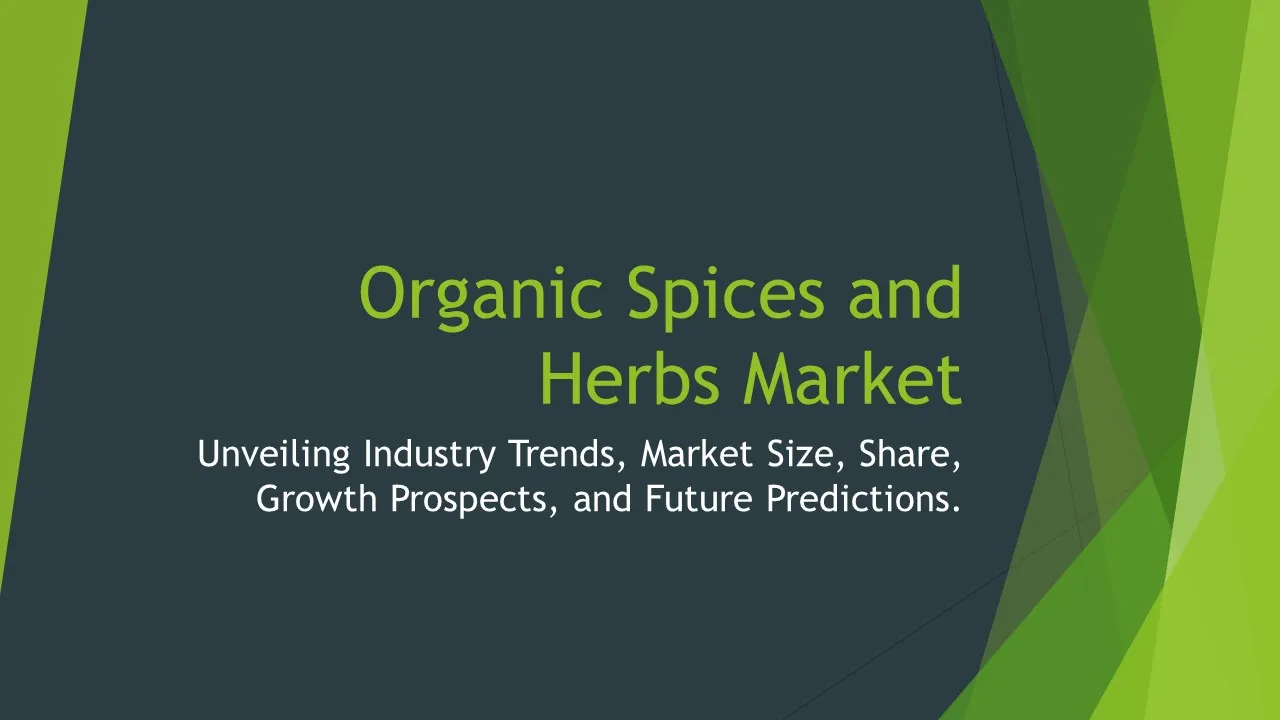Organic Farming
Organic Farming Market Segments - by Product Type (Fruits & Vegetables, Grains & Cereals, Dairy Products, Meat & Poultry, Others), Application (Food & Beverages, Textiles, Personal Care & Cosmetics, Pharmaceuticals, Others), Distribution Channel (Direct Sales, Retail Stores, Online Platforms, Farmers' Markets, Others), Ingredient Type (Fertilizers, Pesticides, Growth Enhancers, Soil Amendments, Others), and Region (North America, Europe, Asia Pacific, Latin America, Middle East & Africa) - Global Industry Analysis, Growth, Share, Size, Trends, and Forecast
- Report Preview
- Table Of Content
- Segments
- Methodology
Organic Farming Market Outlook
The global organic farming market was valued at approximately $62 billion in 2022, and it is projected to reach around $126 billion by 2033, growing at a robust compound annual growth rate (CAGR) of 8.5% during the forecast period. This growth can be primarily attributed to the increasing consumer awareness regarding health and environmental issues associated with chemical fertilizers and pesticides. Moreover, rising disposable income allows consumers to invest in organic products, which are often perceived as healthier and safer alternatives. The expansion of distribution channels, including online platforms, has made organic products more accessible to a broader audience. Additionally, government initiatives and support for organic farming practices further boost the market's growth potential. The rising demand for organic food, driven by millennials and health-conscious consumers, creates numerous opportunities for producers and stakeholders in the organic farming industry.
Growth Factor of the Market
The organic farming market is experiencing significant growth due to several interrelated factors. The surge in health awareness among consumers has led to an increasing preference for organic products, which are free from synthetic fertilizers and pesticides. This shift in consumer behavior is further reinforced by extensive research highlighting the nutritional benefits of organic produce, which often contain higher levels of antioxidants and essential nutrients. Furthermore, the environmental sustainability associated with organic farming methods is attracting eco-conscious consumers looking for sustainable lifestyle choices. The rise in food safety concerns has also led to a greater demand for organic options, as consumers associate organic farming practices with fewer contaminants and safer products. Additionally, the implementation of stringent regulations regarding food quality and safety across various regions propels the growth of the organic farming market, as more farmers transition to certified organic methods to meet consumer demands and regulatory standards. Finally, the support from governments and organizations promoting organic agriculture contributes to the market's expansion, providing resources and incentives for farmers to adopt sustainable practices.
Key Highlights of the Market
- Substantial growth projected, with a CAGR of 8.5% from 2022 to 2033.
- Increasing health awareness among consumers driving the demand for organic food products.
- Government initiatives supporting organic farming practices and sustainability.
- Expansion of distribution channels, making organic products more accessible.
- Higher nutritional value associated with organic produce boosting consumer preferences.
By Product Type
Fruits & Vegetables:
Fruits and vegetables hold a significant portion of the organic farming market, primarily due to the rising consumer preference for fresh and healthy produce. The health benefits associated with organic fruits and vegetables, including higher antioxidant content, are appealing to health-conscious consumers. The popularity of clean eating trends and farm-to-table dining experiences has further fueled this segment's growth. Additionally, the cultivation of organic fruits and vegetables encourages biodiversity and enhances soil health, which is increasingly recognized by farmers. The adoption of organic farming practices in this segment not only benefits consumers but also creates sustainable livelihoods for farmers, promoting a positive economic impact.
Grains & Cereals:
The grains and cereals segment of the organic farming market has seen significant growth, driven by an increasing consumer shift towards healthier diets. Organic grains, such as rice, wheat, and oats, are increasingly being used in both household cooking and commercial food production. As the demand for gluten-free and whole-grain products rises, organic grains are becoming more popular among consumers looking for alternatives to conventional options. Additionally, the growing awareness of the environmental benefits of organic farming, such as reduced soil erosion and improved soil fertility, encourages farmers to adopt organic practices for cereal cultivation. This shift creates new opportunities for organic grain producers to cater to a more health-conscious market.
Dairy Products:
The organic dairy products segment is gaining momentum as consumers are becoming more aware of the health benefits associated with organic dairy, including higher nutrient levels and the absence of artificial hormones and antibiotics. The demand for organic milk, cheese, and yogurt is steadily increasing, driven by health-conscious consumers who prioritize natural ingredients. The organic dairy market is also supported by growing concerns regarding animal welfare, leading consumers to prefer products from farms that practice humane treatment of animals. The expansion of organic dairy options in retail and food service sectors also contributes to this segment's growth, providing consumers with a variety of choices that align with their health and ethical values.
Meat & Poultry:
The organic meat and poultry market is expanding as consumers increasingly seek ethical and sustainable sources of protein. Organic meat is perceived as a healthier option, free from synthetic additives and antibiotics, which resonates with health-conscious consumers. Additionally, the growing awareness of animal welfare concerns has led consumers to prefer organic meat products, as organic farming practices promote humane treatment of livestock. The shift towards organic meat is also fueled by rising disposable incomes, allowing consumers to invest in premium products. Retailers are responding to this demand by increasing their organic meat offerings, thereby enhancing visibility and accessibility for consumers.
Others:
This category encompasses a variety of organic products that do not fit neatly into the primary segments of fruits, vegetables, grains, dairy, and meat. This includes organic herbs, nuts, and seeds, which are gaining popularity for their health benefits and culinary applications. The demand for these products is growing as consumers become more adventurous with their cooking and seek out unique flavors and health-enhancing ingredients. The increasing popularity of organic snacks and ready-to-eat meals also contributes to the growth of this segment, as consumers look for convenient yet healthy options. Overall, the 'Others' segment plays a crucial role in diversifying the organic farming market and meeting the evolving needs of consumers.
By Application
Food & Beverages:
The food and beverages application is the largest segment within the organic farming market, driven by the increasing consumer preference for organic food products. As more consumers become aware of the health benefits associated with organic diets, the demand for organic fruits, vegetables, grains, and processed food products has surged. This trend is further supported by the growing number of certifications and labels that assure consumers of product authenticity. Additionally, the rise of health-conscious eating habits and the demand for clean labels in food and beverages continue to propel this segment's growth, making organic food a staple in many households.
Textiles:
The textiles application of organic farming is gradually gaining traction, particularly with the growing demand for sustainable and eco-friendly materials. Organic cotton and other natural fibers are increasingly sought after by manufacturers and consumers alike, as they align with the principles of sustainability and environmental responsibility. The shift towards sustainable fashion is encouraging brands to incorporate organic materials into their collections, leading to a positive impact on the organic farming sector that produces these raw materials. Furthermore, as consumers become more aware of the environmental impact of conventional textile production, the organic textiles market is likely to expand significantly.
Personal Care & Cosmetics:
The personal care and cosmetics application of organic farming is witnessing substantial growth as consumers prioritize natural and organic ingredients in their beauty and skincare products. The increasing awareness of the potential harmful effects of synthetic chemicals in personal care products is driving the demand for organic alternatives, which are perceived as safer and healthier options. Brands are responding to this trend by formulating products with organic ingredients, thereby enhancing their market appeal. The growing trend of holistic wellness further supports the demand for organic personal care products, creating opportunities for organic farmers to supply raw materials to this expanding market.
Pharmaceuticals:
The organic farming market also finds applications in the pharmaceutical industry, where organic herbs and plants are utilized in the production of natural medicines and supplements. The rising consumer preference for herbal remedies and natural health products is driving the demand for organic ingredients in pharmaceuticals. With an increasing shift towards preventive healthcare and wellness, the organic pharmaceutical segment is poised for significant growth, as consumers seek out natural alternatives to synthetic medications. This trend not only supports the organic farming market but also promotes the integration of traditional knowledge and practices in modern healthcare.
Others:
The 'Others' category within the application segment includes various niche markets that utilize organic products in other industries, such as pet food and home care products. As consumers seek healthier and more environmentally friendly options for their pets, the demand for organic pet food is on the rise. Additionally, organic cleaning products are gaining popularity among eco-conscious consumers who prefer natural alternatives to traditional cleaning agents. This segment encompasses a diverse array of applications, reflecting the versatility of organic farming practices and the growing consumer demand for organic goods across various sectors.
By Distribution Channel
Direct Sales:
Direct sales play a crucial role in the organic farming market, enabling farmers to connect directly with consumers and eliminate intermediaries. This approach allows farmers to offer fresh organic produce at competitive prices while fostering a personal relationship with their customers. Direct sales channels, such as farmers' markets and community-supported agriculture (CSA) programs, are increasingly popular among consumers seeking locally sourced organic products. This trend not only supports local economies but also enhances consumer trust, as buyers can directly engage with the producers and learn about their farming practices.
Retail Stores:
Retail stores are a significant distribution channel for organic products, with many supermarkets and specialty health food stores dedicating entire sections to organic goods. The availability of organic products in retail settings has greatly expanded, making it easier for consumers to access a wide range of organic options. Major retailers have recognized the growing demand for organic items and are increasingly stocking their shelves with certified organic products. This shift reflects a broader trend towards health-conscious consumerism and the increasing willingness of retailers to invest in organic offerings to meet customer demands.
Online Platforms:
The rise of e-commerce has transformed the organic farming market, providing a convenient platform for consumers to purchase organic products from the comfort of their homes. Online platforms enable farmers and brands to reach a larger audience, and the convenience of online shopping appeals to busy consumers looking for easy access to organic goods. Additionally, the COVID-19 pandemic accelerated the adoption of online shopping, further boosting the demand for organic products through digital channels. This distribution channel is expected to continue growing as more consumers embrace the convenience of online shopping for their organic needs.
Farmers' Markets:
Farmers' markets are an essential channel for organic farming, providing a direct sales platform for farmers to showcase their products to local consumers. These markets not only facilitate the sale of organic produce but also promote community engagement and support for local agriculture. Shoppers at farmers' markets often prioritize fresh, seasonal, and sustainably sourced products, aligning with the values of organic farming. The growing popularity of farmers' markets reflects a broader trend towards supporting local economies and embracing healthier lifestyles, thereby contributing to the overall growth of the organic farming market.
Others:
This category includes various distribution channels that support the organic farming market, such as food cooperatives and subscription services. Food cooperatives allow consumers to join together to purchase organic products directly from farmers, fostering a sense of community and shared values. Subscription services provide consumers with regular deliveries of organic produce, ensuring they have access to fresh and seasonal items. These alternative distribution channels cater to niche markets and contribute to the overall growth and diversification of the organic farming sector.
By Ingredient Type
Fertilizers:
Organic fertilizers play a vital role in enhancing soil fertility and promoting healthy plant growth in organic farming. These fertilizers, made from natural materials such as compost, manure, and plant residues, provide essential nutrients to crops without the adverse effects associated with synthetic fertilizers. The growing awareness of soil health and its importance in sustainable agriculture has led to an increased demand for organic fertilizers among farmers. Moreover, the rising consciousness about environmental protection and sustainability is driving the adoption of organic fertilization methods, further propelling this segment's growth.
Pesticides:
Organic pesticides are integral to organic farming practices, providing an environmentally friendly solution for pest control. Made from natural substances, organic pesticides effectively manage pest populations while minimizing harm to beneficial insects and the ecosystem. As consumers become more aware of the potential dangers of chemical pesticides, the demand for organic alternatives is on the rise. The increasing regulatory pressure on the use of synthetic pesticides further supports the growth of the organic pesticide market, as farmers seek sustainable solutions for pest management without compromising product quality.
Growth Enhancers:
Organic growth enhancers, including biostimulants and plant hormones, are gaining popularity in the organic farming market as key components for enhancing crop yields and overall plant health. These natural products promote root development, improve nutrient uptake, and bolster plants' resistance to environmental stressors. As farmers seek to optimize their yields while adhering to organic standards, the demand for growth enhancers is expected to increase. Additionally, the rising focus on maximizing agricultural productivity sustainably drives the growth of this segment, as organic growth enhancers align with the principles of organic farming.
Soil Amendments:
Soil amendments, which include organic matter such as compost and green manure, are essential for improving soil structure and fertility in organic farming. These amendments enhance the soil's ability to retain moisture, increase nutrient availability, and promote beneficial microbial activity. As organic farming practices gain traction, the demand for soil amendments is expected to grow, driven by farmers' recognition of the importance of sustainable soil management. This segment plays a crucial role in ensuring the long-term viability of organic farming systems, contributing to healthier crops and reducing the dependency on chemical inputs.
Others:
The 'Others' category within ingredient types encompasses various organic inputs that support sustainable farming practices, such as natural growth regulators and biological control agents. These products are designed to promote plant health and prevent disease while adhering to organic farming standards. As the organic farming market continues to expand, the demand for diverse organic inputs is expected to rise, reflecting the growing emphasis on sustainable agriculture and the need for effective alternatives to synthetic inputs. This segment highlights the innovation within the organic farming industry as researchers develop new solutions to support organic crop production.
By Region
The organic farming market shows significant regional variations, with North America and Europe leading the charge in terms of market size and growth. In North America, the organic farming market was valued at around $37 billion in 2022, driven by the increasing consumer demand for organic products and the expansion of retail channels. The United States, in particular, has emerged as a frontrunner in organic agriculture, with a substantial portion of farmland dedicated to organic farming practices. The market is projected to grow at a CAGR of 8% through 2033, reflecting the ongoing trend towards healthier food choices and sustainable farming methods.
In Europe, the organic farming market is also witnessing substantial growth, with a market size estimated at approximately $25 billion in 2022. The demand for organic products in European countries has been fueled by strict regulations on food quality and safety, as well as a growing awareness of environmental sustainability. Countries such as Germany, France, and the United Kingdom are leading the way in organic farming adoption, showcasing an impressive increase in organic farmland and consumption of organic products. The European market is expected to grow at a CAGR of 7.5% during the forecast period, propelled by the commitment to sustainability and the increasing popularity of organic diets across the continent.
Opportunities
As the organic farming market continues to expand, several opportunities are emerging for farmers, producers, and stakeholders. One significant opportunity lies in the increasing consumer demand for organic products, driven by health consciousness and environmental awareness. Farmers who transition to organic practices can tap into this growing market by diversifying their crop offerings and exploring niche markets, such as organic specialty foods, herbs, and artisanal products. Additionally, the rise of e-commerce provides farmers and producers with a platform to reach a broader audience, enhancing their market presence and sales potential. By leveraging online sales channels, farmers can establish direct relationships with consumers and cater to the growing demand for convenience in purchasing organic goods.
Another opportunity for growth in the organic farming market lies in technological advancements and innovation. Emerging technologies such as precision agriculture, biotechnology, and sustainable practices can enhance productivity and efficiency in organic farming. Farmers who adopt these technologies can improve crop yields, optimize resource utilization, and reduce costs while maintaining their commitment to organic principles. Additionally, partnerships between farmers and research institutions can drive innovation in organic farming techniques, leading to the development of more effective and sustainable practices. By embracing technological advancements, stakeholders can position themselves for success in the evolving organic farming landscape.
Threats
Despite the promising growth trajectory of the organic farming market, several threats could hinder its progress. One significant threat is the increasing prevalence of counterfeit organic products in the market. As consumer demand for organic goods rises, the potential for fraudulent labeling and misrepresentation of products also increases. This not only undermines consumer trust but also poses a risk to genuine organic farmers who adhere to strict certification standards. Regulatory bodies must enforce stringent measures to combat fraudulent practices and ensure the integrity of organic labeling to protect consumers and support credible organic producers.
Another threat to the organic farming market is the vulnerability to climate change and adverse weather conditions. Organic farmers often rely on natural methods for pest control and soil management, making them susceptible to fluctuations in climate and environmental conditions. Extreme weather events, such as droughts, floods, and temperature fluctuations, can negatively impact organic crop yields and threaten the livelihoods of farmers. To mitigate these risks, it is essential for the organic farming community to adopt resilient farming practices and invest in research and development to enhance adaptability to changing environmental conditions.
Competitor Outlook
- Whole Foods Market
- Organic Valley
- Stonyfield Farm
- Earthbound Farm
- Applegate Farms
- Nature's Path
- General Mills (Annie's Homegrown)
- Horizon Organic
- Dr. Bronner's
- Clif Bar & Company
- Newman's Own
- Blue Diamond Growers
- Simply Organic
- Vital Farms
- Fairlife
The competitive landscape of the organic farming market is becoming increasingly dynamic as more players enter the field, driven by the rising demand for organic products. The market is characterized by a mix of established companies and emerging brands, each vying for market share in this rapidly growing sector. Companies such as Whole Foods Market and Organic Valley have established themselves as leaders, leveraging their strong brand reputations and extensive distribution networks to capture consumer attention. These companies focus on quality, transparency, and sustainability, which resonate with the values of health-conscious consumers. Moreover, many of these competitors are actively engaged in sustainable practices and certifications, positioning themselves as trusted sources of organic products.
Emerging brands in the organic farming sector are also making significant strides, capitalizing on niche markets and innovative product offerings. For instance, companies like Stonyfield Farm and Clif Bar & Company are known for their commitment to organic principles, producing a wide range of organic dairy and snack products that appeal to health-conscious consumers. Additionally, brands like Fairlife are introducing organic dairy alternatives, catering to the growing demand for plant-based options. This diverse competitive landscape fosters innovation and pushes established companies to adapt and evolve their offerings to stay relevant in a changing market.
As the organic farming market continues to grow, collaborations and partnerships between companies and research institutions are becoming increasingly important. These alliances facilitate the exchange of knowledge and resources, driving innovation in sustainable farming practices and product development. Companies such as General Mills, with their commitment to sourcing organic ingredients through sustainable channels, exemplify the potential for collaboration to enhance brand credibility and market presence. The competitive landscape will likely remain dynamic as consumer preferences evolve and new players continue to emerge, highlighting the importance of adaptability and innovation in the organic farming market.
1 Appendix
- 1.1 List of Tables
- 1.2 List of Figures
2 Introduction
- 2.1 Market Definition
- 2.2 Scope of the Report
- 2.3 Study Assumptions
- 2.4 Base Currency & Forecast Periods
3 Market Dynamics
- 3.1 Market Growth Factors
- 3.2 Economic & Global Events
- 3.3 Innovation Trends
- 3.4 Supply Chain Analysis
4 Consumer Behavior
- 4.1 Market Trends
- 4.2 Pricing Analysis
- 4.3 Buyer Insights
5 Key Player Profiles
- 5.1 Fairlife
- 5.1.1 Business Overview
- 5.1.2 Products & Services
- 5.1.3 Financials
- 5.1.4 Recent Developments
- 5.1.5 SWOT Analysis
- 5.2 Vital Farms
- 5.2.1 Business Overview
- 5.2.2 Products & Services
- 5.2.3 Financials
- 5.2.4 Recent Developments
- 5.2.5 SWOT Analysis
- 5.3 Newman's Own
- 5.3.1 Business Overview
- 5.3.2 Products & Services
- 5.3.3 Financials
- 5.3.4 Recent Developments
- 5.3.5 SWOT Analysis
- 5.4 Dr. Bronner's
- 5.4.1 Business Overview
- 5.4.2 Products & Services
- 5.4.3 Financials
- 5.4.4 Recent Developments
- 5.4.5 SWOT Analysis
- 5.5 Nature's Path
- 5.5.1 Business Overview
- 5.5.2 Products & Services
- 5.5.3 Financials
- 5.5.4 Recent Developments
- 5.5.5 SWOT Analysis
- 5.6 Organic Valley
- 5.6.1 Business Overview
- 5.6.2 Products & Services
- 5.6.3 Financials
- 5.6.4 Recent Developments
- 5.6.5 SWOT Analysis
- 5.7 Simply Organic
- 5.7.1 Business Overview
- 5.7.2 Products & Services
- 5.7.3 Financials
- 5.7.4 Recent Developments
- 5.7.5 SWOT Analysis
- 5.8 Applegate Farms
- 5.8.1 Business Overview
- 5.8.2 Products & Services
- 5.8.3 Financials
- 5.8.4 Recent Developments
- 5.8.5 SWOT Analysis
- 5.9 Earthbound Farm
- 5.9.1 Business Overview
- 5.9.2 Products & Services
- 5.9.3 Financials
- 5.9.4 Recent Developments
- 5.9.5 SWOT Analysis
- 5.10 Horizon Organic
- 5.10.1 Business Overview
- 5.10.2 Products & Services
- 5.10.3 Financials
- 5.10.4 Recent Developments
- 5.10.5 SWOT Analysis
- 5.11 Stonyfield Farm
- 5.11.1 Business Overview
- 5.11.2 Products & Services
- 5.11.3 Financials
- 5.11.4 Recent Developments
- 5.11.5 SWOT Analysis
- 5.12 Clif Bar & Company
- 5.12.1 Business Overview
- 5.12.2 Products & Services
- 5.12.3 Financials
- 5.12.4 Recent Developments
- 5.12.5 SWOT Analysis
- 5.13 Whole Foods Market
- 5.13.1 Business Overview
- 5.13.2 Products & Services
- 5.13.3 Financials
- 5.13.4 Recent Developments
- 5.13.5 SWOT Analysis
- 5.14 Blue Diamond Growers
- 5.14.1 Business Overview
- 5.14.2 Products & Services
- 5.14.3 Financials
- 5.14.4 Recent Developments
- 5.14.5 SWOT Analysis
- 5.15 General Mills (Annie's Homegrown)
- 5.15.1 Business Overview
- 5.15.2 Products & Services
- 5.15.3 Financials
- 5.15.4 Recent Developments
- 5.15.5 SWOT Analysis
- 5.1 Fairlife
6 Market Segmentation
- 6.1 Organic Farming Market, By Application
- 6.1.1 Food & Beverages
- 6.1.2 Textiles
- 6.1.3 Personal Care & Cosmetics
- 6.1.4 Pharmaceuticals
- 6.1.5 Others
- 6.2 Organic Farming Market, By Product Type
- 6.2.1 Fruits & Vegetables
- 6.2.2 Grains & Cereals
- 6.2.3 Dairy Products
- 6.2.4 Meat & Poultry
- 6.2.5 Others
- 6.3 Organic Farming Market, By Ingredient Type
- 6.3.1 Fertilizers
- 6.3.2 Pesticides
- 6.3.3 Growth Enhancers
- 6.3.4 Soil Amendments
- 6.3.5 Others
- 6.4 Organic Farming Market, By Distribution Channel
- 6.4.1 Direct Sales
- 6.4.2 Retail Stores
- 6.4.3 Online Platforms
- 6.4.4 Farmers' Markets
- 6.4.5 Others
- 6.1 Organic Farming Market, By Application
7 Competitive Analysis
- 7.1 Key Player Comparison
- 7.2 Market Share Analysis
- 7.3 Investment Trends
- 7.4 SWOT Analysis
8 Research Methodology
- 8.1 Analysis Design
- 8.2 Research Phases
- 8.3 Study Timeline
9 Future Market Outlook
- 9.1 Growth Forecast
- 9.2 Market Evolution
10 Geographical Overview
- 10.1 Europe - Market Analysis
- 10.1.1 By Country
- 10.1.1.1 UK
- 10.1.1.2 France
- 10.1.1.3 Germany
- 10.1.1.4 Spain
- 10.1.1.5 Italy
- 10.1.1 By Country
- 10.2 Asia Pacific - Market Analysis
- 10.2.1 By Country
- 10.2.1.1 India
- 10.2.1.2 China
- 10.2.1.3 Japan
- 10.2.1.4 South Korea
- 10.2.1 By Country
- 10.3 Latin America - Market Analysis
- 10.3.1 By Country
- 10.3.1.1 Brazil
- 10.3.1.2 Argentina
- 10.3.1.3 Mexico
- 10.3.1 By Country
- 10.4 North America - Market Analysis
- 10.4.1 By Country
- 10.4.1.1 USA
- 10.4.1.2 Canada
- 10.4.1 By Country
- 10.5 Organic Farming Market by Region
- 10.6 Middle East & Africa - Market Analysis
- 10.6.1 By Country
- 10.6.1.1 Middle East
- 10.6.1.2 Africa
- 10.6.1 By Country
- 10.1 Europe - Market Analysis
11 Global Economic Factors
- 11.1 Inflation Impact
- 11.2 Trade Policies
12 Technology & Innovation
- 12.1 Emerging Technologies
- 12.2 AI & Digital Trends
- 12.3 Patent Research
13 Investment & Market Growth
- 13.1 Funding Trends
- 13.2 Future Market Projections
14 Market Overview & Key Insights
- 14.1 Executive Summary
- 14.2 Key Trends
- 14.3 Market Challenges
- 14.4 Regulatory Landscape
Segments Analyzed in the Report
The global Organic Farming market is categorized based on
By Product Type
- Fruits & Vegetables
- Grains & Cereals
- Dairy Products
- Meat & Poultry
- Others
By Application
- Food & Beverages
- Textiles
- Personal Care & Cosmetics
- Pharmaceuticals
- Others
By Distribution Channel
- Direct Sales
- Retail Stores
- Online Platforms
- Farmers' Markets
- Others
By Ingredient Type
- Fertilizers
- Pesticides
- Growth Enhancers
- Soil Amendments
- Others
By Region
- North America
- Europe
- Asia Pacific
- Latin America
- Middle East & Africa
Key Players
- Whole Foods Market
- Organic Valley
- Stonyfield Farm
- Earthbound Farm
- Applegate Farms
- Nature's Path
- General Mills (Annie's Homegrown)
- Horizon Organic
- Dr. Bronner's
- Clif Bar & Company
- Newman's Own
- Blue Diamond Growers
- Simply Organic
- Vital Farms
- Fairlife
- Publish Date : Jan 20 ,2025
- Report ID : AG-657
- No. Of Pages : 100
- Format : |
- Ratings : 4.5 (110 Reviews)









